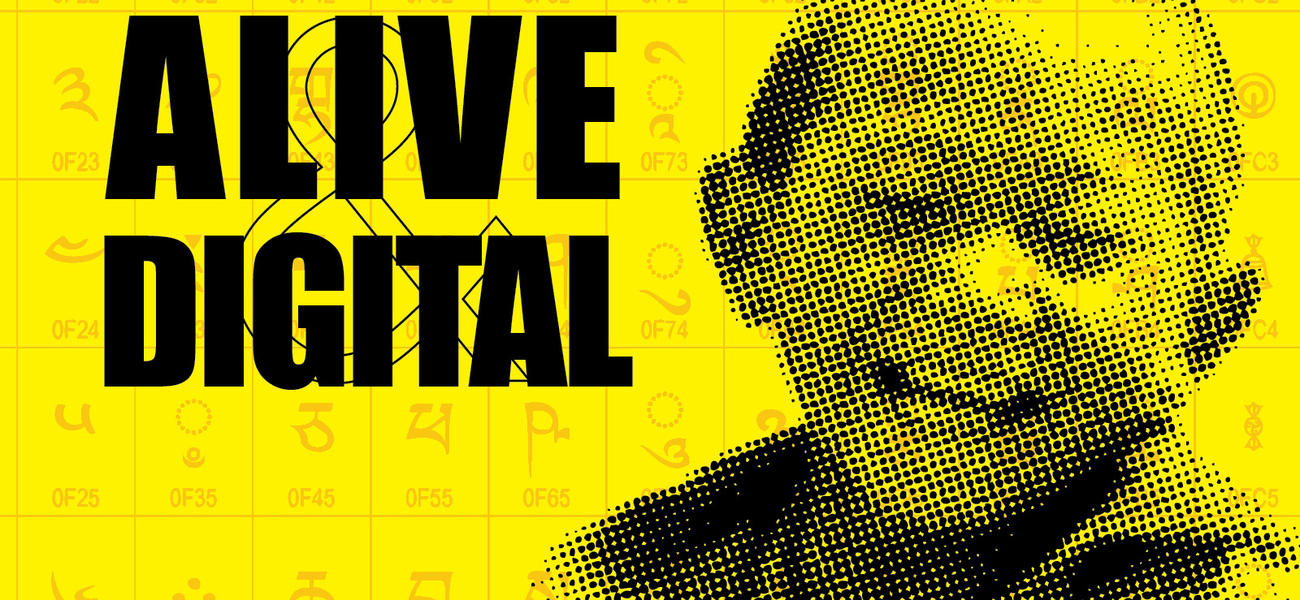In this age of digitalization, technology is playing an increasingly important role in both the preservation and sustainability of minority languages. From blogs and video sharing to text messaging and social media, powerful technologies are shaping the future of minority languages. This movement is stretching the boundaries of minority language communities beyond “geographical place” into a “digital place” bridging together communities from all regions of the world.
What technological breakthroughs lie ahead and how is technology today impacting linguistic minorities worldwide? Alive & Digital, the sixth and final event in Trace Foundation’s first lecture series, Minority Language in Today’s Global Society, will bring together scholars and experts who have worked extensively on minority language preservation and new technologies. On Saturday, November 20, a diverse group of speakers will discuss past and present trends in the relationship between technology and language, providing insightful, cross-cultural perspectives.
On Sunday, November 21, we will explore technological issues specific to the Tibetan language including, the Tibetan font converter, Unicode, and iPhone applications.
Through engaging lectures and discussion, Alive & Digital aims to draw attention to the ongoing developments in technologies and the corresponding benefits they bring to the vitality and viability of minority language in our digital future.
Christopher Walker
Christopher Walker is a web developer for Northwestern University and a PhD candidate in anthropology at the University of Chicago, where he taught first-year Tibetan last year. Chris has been a contributor of Tibetan computing tools for a number of years—notably the Extended Wylie keyboard now bundled in Mac OS X. He has helped to author several educational materials, including the Lhasa Verbs Dictionary, and is a technical contributor to the Tibetan & Himalayan Library. Chris is a graduate of Tibet University's language program and undertook his fieldwork in partnership with the Tibetan Academy of Social Sciences.
Christopher Fynn
Christopher Fynn works with the Dzongkha Development Commission in Thimphu, Bhutan. He has worked extensively in Bhutan on various projects, including developing Unicode tools, compatible fonts for the Tibetan and Dzongkha language. He has collaborated with Microsoft to develop the OpenType shaping rules for Tibetan script and collation rules, which later were incorporated into Windows Vista and other programs. Chris comes from a background in software engineering, text inputting, printing, and typesetting technology. In 1994, he developed a Tibetan keyboard utility (TibKey) and font (Tibetan Modern) for MS Windows 3. Since 1995, Chris has been a member of the BSI, Internationalization panel working with ISO 10646. Chris has also worked with the Department of Information Technology on the Dzongkha Linux project, which developed the support for Tibetan script now found in the Linux operating system and GNOME desktop and a fully localized Dzongkha version of Linux.
Rigthar
Rigthar (Route) is a lecturer at the Qinghai Normal University Information Research Center. Rigthar’s expertise is Tibetan digital information. He is a contributor to Qinghai Province Natural Science Foundation’s project, the Pandita Tibetan-Chinese-English Electronic Dictionary, and was awarded third place in the 2006 Qian Wei Zhang Chinese information processing science and technology competition for a project called Pandita Tibetan Series software. He participated in a national competition with a project entitled "Tibetan Automatic Dimensioning System," as well as in the technology department’s preresearch project entitled “Research for Tibetan-Chinese Machine Translation as a Public Service.”
Sonam Chusang
Sonam Chusang was born in Amdo province, eastern Tibet. He moved to India at the age of ten and graduated from the Tibetan Children’s Village School in Dharamsala in 1999. He moved to Canada shortly afterward and began teaching the Tibetan language to foreign students in Vancouver and Virginia. As a Tibetan language teacher, he has worked to adopt modern technology to make learning materials more accessible, particularly for the younger generation. He has developed various applications such as “Thangka,” “Reading Tibetan,” “Tibetan Alphabet,” “Writing Tibetan,” and “Tibetan Amdo Reading," all of which are downloadable for the iPhone. These applications are designed to help Tibetan language students at varying levels of learning to communicate and learn through the use of mobile devices.
Jeff Wallman
Jeff Wallman is the executive director of Tibetan Buddhist Resource Center (TBRC). He also works as a technology consultant to the Rubin Foundation. Jeff obtained his MS in Mechanical Engineering from Boston University in 1996 and a Professional Certification in Database Design from Worcester Polytechnic Institute in 2001. He has been working with TBRC since 2001, managing digital libraries throughout India and Nepal and has also worked as a new media consultant on technologies initiatives for the Rubin Museum of Art in New York City. He has developed and executed print-on-demand technologies to print traditional Tibetan texts from modern digital woodblocks. His particular interests are in knowledge modeling, software engineering, and digital preservation. Jeff would like to see this work help sustain the spiritual, philosophical, religious, historical, and scientific domains of the Tibetan worldview.
Lobsang Monlam
Ven. Lobsang Monlam is the developer of the Monlam Tibetan font. He was first introduced to computers while completing his monastic studies at Sera Monastery in India. He has continued to develop fonts for public use in Tibetan communities. He also created the Monlam Common Tibetan Pronunciation, which was distributed to Tibetan communities free of cost. He is currently continuing his computer education and is determined to inscribe thick Tibetan Buddhist philosophical treatises into computers in future. In 2001, during the construction of the new prayer hall of Sera Me monastery, he took responsibility for the architecture, the project of building the interior monuments, and the interior and exterior paintings of the big prayer hall.
TRACE FOUNDATION
132 Perry St., Suite 2B
New York, NY 10014
1 (212) 367-8490
events@trace.org
NEAREST SUBWAYS:
A/C/E/B/D/F/M to W. 4th St. –
Washington Sq
L/A/C/E to 8th Ave. – 14th
1 to Christopher St.
PATH to Christopher St.

